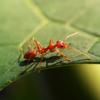Guide to the Ants of Wisconsin
Welcome to the catalogue of my Wisconsin Anting. In this list, I list what I have found, and then give some information on it in this state. Each year, the list will hopefully get more and more species until there’s no more left to document. Hopefully this should encourage some Wisconsin antkeepers and provide helpful information.
The dates might be a little unusual, and I kind of update each species with info as I learn more. I found quite a few species that were not previously known to be in Wisconsin.
Formicinae
Formica pergandei - I’ve found them having trails through a whole forest to another Formica colony, they are cool looking with a red head and mesosoma and a black and grey striped gaster. Aggressive and stands tall with mandibles wide when threatened.
Formica subsericea - I find these queens quite often on the sidewalks in July, but mostly in August. The colonies are usually in the forest, especially in small clearings with thatch groundcover in some places. I do not find them in pine areas. Large populations at Kettle Moraine State Forest.
This species tends to fly from late July to early/mid August, in the late morning.
Formica pallidefulva - I find this species in many habitats, such as fields or open clearings. and the variants are not very different. I see them occasionally on sidewalks on some days, where it’s particularly warm. I have also seen them under rocks in shrub forests. Their flights are spotty, typically throughout July.
Formica argentea - There’s large populations at Spring Green Preserve and in areas with sandy soil. As well as Spring Green, I found these at multiple smaller state parks in the area, including Halfway Prairie State Park.
Formica biophilica - I’ve found populations of these at Spring Green, tending aphids on the oak tree beside the Kiosk at the beginning of the path.
Formica dolosa - There was a flight on August 18th in Adams County. Very common at Spring Green.
Formica montana - I find this species in fields and sidewalks in some areas. Their distribution is spotty, and there’s much more research to be done on this species. I found that this species may consist of supercolonies, or very polydymous colonies much like their european cousins, F. fuscocinerea/F. cinerea. When other ants have flights, they swarm the mound workers drag queens back to the nest and dispatch them. The most victimized by this swarming is typically Tetramorium, Lasius, and even other Formica sp. In the summer of 2019, I noticed that Tetramorium immigrans had killed an entire colony of this species, with hundreds of dead workers at the surface and Tetramorium entering and exiting the nest entrance. I read that this species unusually flies in the evening.
Here’s the link to my experimentation with this species: https://www.formicul...-supercolonies/
If Formica montana can stretch its distribution across most of the United States, variants can be expected. Research on this species is fairly needed and would be interesting.
In summer 2019, I noticed a colony had moved into my yard. By October, the colony had moved into the front of my house, and another one in my yard moved to the neighbors yard. It seems migration is common in this species, so studying them may be slightly more difficult. I believe colonies might bud, which would explain the low aggression between different nests.
Formica vinculans - I found this ant on my 2019 Western Anting Trip at Spring Green, I found a few workers, typically climbing on plants and foraging sporadically and in small amounts. This species was found in September at the Woodman Lake Sand Prairie.
Formica neogagates - I found this species at Spring Green as a host to Polyergus mexicanus. They tend to thrive in natural forests/prairies, but don't do as well in disturbed or wet environments. On one ocassion, I found this species plentiful in a sandy pine/oak mix forest, often under moss.
Formica aserva - I found this species at Spring Green with a large mound. They had no slaves.
Formica creightoni - A keeper in Rhinelander found a queen of this species, sent her to me and I kept her. I got her to get 6 Formica creightoni workers, but she died because I didn't know her slave species. These ants enslave neogagates group workers. They tend to fly in July.
Formica hewitti - I found this species at Spring Green as a host to Polyergus mexicanus.
Formica prociliata - I found this species at Spring Green. I finally identified the specimens in December 2020. They make large, although usually flat mounds with some degree of thatch. Their workers are polymorphic.
Formica obscuripes - i found this species tending aphids at Chiwaukee Prairie State Natural Area, they had a large mound and controlled an entire plant. The species is unmistakable because of their coloration, the larger workers typically have lighter, red heads with a dark body. The smaller workers sometimes have orange/red heads as well.
Lasius neoniger - This is the most common Lasius associated with humans, and often have large hills in baseball fields. They had a huge population in Spring Green Nature Preserve, and queens usually overwinter before laying eggs. Flights sometimes get rained out due to the conditions they prefer to fly in. They often fly in August/September
Huge flight on 9/1/18
Lasius interjectus - I often find them near marshes and bogs, under and in wood tending to root aphids. They quite easily come out in 50 Fahrenheit weather (10 C), even more when the sun is out. Their preferred host is Lasius americanus, and they can be polygynous. They tend to fly in early July.
Lasius americanus - I’ve seen these colonies in damp wood and I often find them in swamps and ponds too. In the spring they crowd together under or on top of rocks to warm up. Flights typically in July or August, I often find them at blacklights and founding queens can be found until late fall.
Lasius brevicornis - Commonly under rocks with galleries of roots, tending to and protecting root aphids. In some instances I have seen them save root aphids before saving their own brood. Common every now and then in fields, had a huge flight in late August, and flew more in September.
Lasius latipes - Although distribution is spotty and these ants are vulnerable, some areas are covered with them, mine included. Because of their endangered status, I limit myself at 5 queens. On one flight day, I could find dozens. The queens use their front legs to somewhat burrow and infiltrate Lasius neoniger colonies. This species is probably the easiest species to introduce workers to, but the queens often die for no reason. If you have a field near you, which has Lasius neoniger, you can likely find these queens on warm afternoons in the fall.
Lasius bureni - I might have found an alate of this species in Waukesha County flying in early September 2019. More specifically, the queen was found wandering the pavement in Pewaukee. There was a deciduous forest nearby. With Pewaukee River Parkway being the closest nature area, I would bet they could be found there. This species has only been found in Wisconsin.
Lasius crypticus - The queens of this species may be mistaken for Lasius neoniger at first glance. However, their bright sheen, the many setae, and blue-esque coloration sets them apart on further examination. I collected this ant at Spring Green, and caught two queens on September 1st.
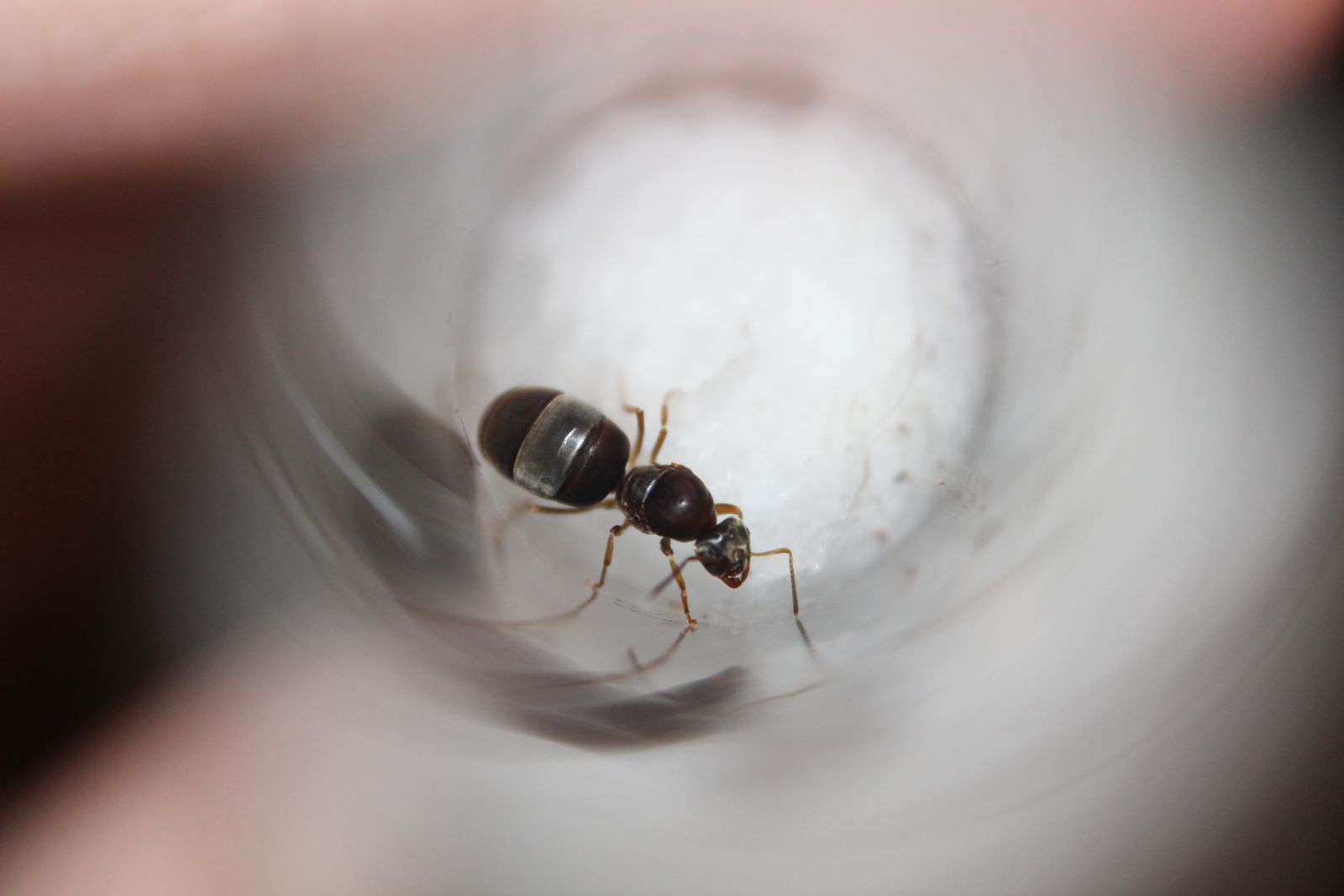
Lasius pallitarsis - I have found this species in Reedsburg in August 2019, where a worker caught my attention which had a silverish-blue gaster. The species was abundant in Nishan Park. They tend to be larger than Lasius neoniger, and often resemble parasitic workers aside from coloration.
Lasius speculiventris - I first mistook light variants of Lasius aphidicola for this species. However, I realized they actually flew in early July. They're similar to aphidicola, but are much brighter on their thorax and have a different flight time than aphidicola.
Lasius claviger - I find these queens all over in spring and fall. I found a colony at Chiwaukee and they're present in all sorts of habitats. Their preferred host is Lasius americanus, but neoniger tends to work.
Lasius subglaber - I found this species at Gotham in April 2020. They were inside a log with some aphids, in the middle of the planted pine area. I believe this species likes sandy areas.
Prenolepis imparis - I find these species in forests, and have only twice seen them in an urban area. They withstand temperatures other ants don’t, and here in Wisconsin I find them having nuptial flights April-May. This year, they had a mock flight on April 24th, where just a few queens flew (I was unable to catch any mated females). I then caught 13 mated queens a few days later. They don’t come out below freezing.
Prenolepis imparis var. minuta - This is a variant of Prenolepis imparis, I have found it once so far, tending to aphids on a Japanese knotweed plant. The workers have a much lighter thorax and slightly lighter head than normal Prenolepis imparis, and are considerably smaller (2-3.5mm).
Camponotus caryae - I found a satellite nest inside of a stick, and when I cracked it open, they were so small that the first species that flashed through my mind was Dolichoderus mariae. Upon closer inspection, they were simply Camponotus caryae minors. Colonies usually have a few hundred workers, and I find them in sticks, usually with spotty trails on a tree.
Camponotus nearcticus - A rather well hidden species until flights come along, and like some other species in Camponotus, their distribution is spotty in Wisconsin. They are one of the first ants to fly, along with Prenolepis imparis, Nylanderia sp., Camponotus pennsylvanicus, and Stenamma brevicorne. I have never seen a queen on the ground, and I always see them climbing fences and trees when they have flights. The workers are often rare, since they’re in such small numbers. I find them in woodpiles and hollow sticks in the forest.
Flew May 26th
Camponotus novaeboracensis - I found a small colony of this species in May when I split open a log near a stream. This was a oak-pine forest and the log lay a sprints length from a road. Queens usually one of the first Camponotus flights of the year.
Had flights on May 26th, I found 2 queens and others found more.
Camponotus pennsylvanicus - Pretty much the most common Camponotus sp. in Wisconsin, they’ll nest just about anywhere; logs, trees, and stumps. I find them having nuptial flights May-July, with the most of them happening at night in June. This species had a small flight on May 1st.
Good sized flight after dark on May 16th, 50% humidity and 65-70 fahrenheit at night.
Big flights with dozens of queens found on May 26th
Multiple good sized flights throughout June.
Camponotus americanus - I found this species at Spring Green. They had a small hole with almost no mound. I found this species in May 2020 nesting under a stick at Gotham. The colony was very large and had big majors. This species is found throughout sandy areas in southwest Wisconsin.
Camponotus chromaiodes - I found a huge colony of this species at the Left Spring Green, which is the smaller part of the preserve nearby. They were living in a fallen tree up the hill from a path, and were near a Camponotus pennsylvanicus colony.
Camponotus subbarbatus - I find this species in western WI, I have found it at both Spring Green and Gotham Jack Pines. It is a small but pretty Camponotus, which typically flies in spring/early summer.
Brachymyrmex depilis - A pretty cryptic species, found in the same places as many woodland species. I’ve ripped up moss, dug up dirt, lifted up rocks and seen this species in all of them. I don’t know what they feed on for protein, although I suspect they may butcher some of their aphids that they tend. They flew in September 2019, having a huge flight.
Polyergus breviceps - I find this species raiding the Formica montana in my yard yearly. I have seen their raids and a dealate queen before.
Polyergus mexicanus - I found this species at Spring Green during April 2020. They enslaved Formica manni and Formica neogagates.
Nylanderia parvula - I found this species at Spring Green and Gotham on multiple occasions.
Nylanderia arenivaga - CheetoLord02 found this species when we were at Gotham Jack Pine Barrens State Natural Area in April 2020. The workers are a neat yellow color and are new to Wisconsin.
Myrmicinae
Aphaenogaster rudis - Quite a common ant in Wisconsin, being found in both pine forests and oak forests. I usually find them with their whole colony at the surface, including the queen. This is on hot days, and they’re usually just under a rock. I also find them quite consistently in rotting logs, where they tend to take up only a portion of the log instead of spreading around throughout the log.
Aphaenogaster tennesseensis - Not the most common in my area, and distribution can be spotty. I’ve found one colony living in the same hollow tree as a Camponotus pennsylvanicus colony. They seemed to collect seeds and hunt springtails. Colonies are abundant in western WI.
Aphaenogaster picea - I’ve seen workers a few times in the forest, but they seem to be cryptic-like and feed on large springtails in most cases. I caught a queen at my blacklight in Early August.
Aphaenogaster treatae - A new record for the state, I found a few colonies of these large, brightly colored ants at Spring Green in April 2020 and May 2020. I found a thriving, huge population at Woodman Lake Sand Prairie in September 2020.
Myrmica sp. - I’ve been unable to identify some of these to the species level (I intend to), however their queens are common in August and September on the sidewalks. They’re almost cryptic and actually quite shy. I find them under rocks and among plants, tending aphids. The taxonomy with this genus can be complicated and messed up, and there’s many gynes and variants.
Myrmica punctiventris - This species can form large, polygynous colonies numbering in the hundreds. Colonies often have up to or over a dozen queens.
Myrmica spatulata - there's a red variant that can be extremely aggressive, and I’ve come across this at Spring Green Nature Preserve. From the colonies I've seen, it does not appear to be polygynous. I find this in sandy areas typically, and they had a large flight at Woodman Lake Sand Prairie on September 6th.
Temnothorax ambiguus - I find workers and nests close by large mounds, and these workers are often found foraging one by one. Without much activity around the nest, along with the small mound size, they are often hard to notice. You can catch them easily at blacklights.
Had a good sized flight on 7-9-18, and flew well throughout July and August.
Found this species in Gotham in May 2020.
Temnothorax curvispinosus - Polygynous like T. ambiguus, and a very closely related species. Also nests in 2-4 inch long twigs like T. ambiguus.
Had a small flight on 7-8-18, 7-9-18, flew well into August.
Temnothorax texanus - I found this species in April 2020 at Spring Green, and mistook them for Monomorium. I found multiple small hills in the sand with workers excavating. New record for WI.
Temnothorax pilagens - I found a worker of this species in early May 2020 at a forest near my house. This is a recent species and has only been found in Michigan and Connecticut until now.
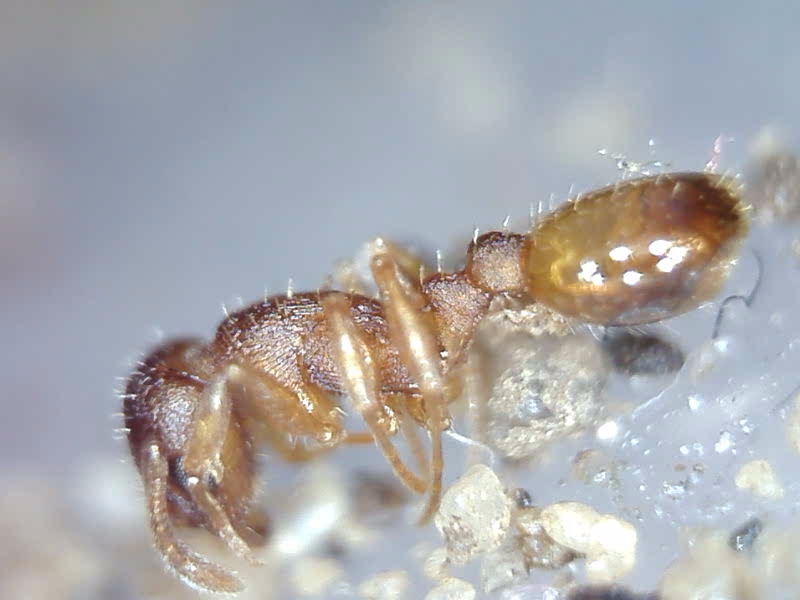
Temnothorax duloticus - I found a queen of this species wandering the forest floor in May 2020. She died before she got host workers.
Temnothorax americanus - I found a queen of this species with three host ambiguus workers in a twig in May 2020. The queens are very strange looking for Temnothorax. The queen unfortunately died.
Crematogaster cerasi - Sometimes hard to notice until they have their flights, which happen at about noon - the afternoon. Their flights are either at the end of August or beginning of September. The colonies often live in any habitat that is undisturbed, which makes them difficult to find in areas without a forest nearby. Workers can be seen forming foraging trails, especially at night. These are widespread throughout the state.
Crematogaster lineolata - I found a colony of these at Gotham in April 2020. We broke open a stick and found the colony, they were actually polygynous. In May 2020 we figured out the true extent of this species at Gotham and there were absolutely tons. They cooperated over a considerable distance.
Monomorium minimum - I found one worker of this species crawling on a fallen tree on 5-1-18. They’re very docile and will nest in just about anything. More common in sandy areas, but I can sometimes find them in a forest.
I found huge populations at Spring Green Preserve, they prefer sandy or loamy areas. It is also in Gotham.
Pheidole pilifera - A new record for the state, I found this species with various mounds on my western Wisconsin Anting Trip in 2019. They seem to be inactive on some of the hot, sunny days. Found at Spring Green if you go on a somewhat wet/cold day. A very strong population is at Woodman Lake Sand Prairie. They have GIANT majors, and tend to fly minutes after a storm and dig their chamber minutes after flight.
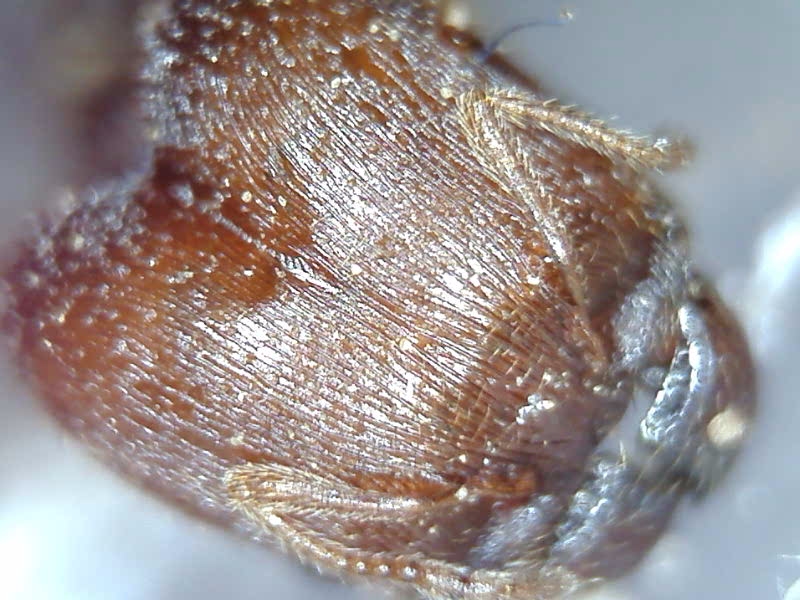
Pheidole bicarinata - I realized both these and pilifera are at Spring Green during my April 2020 trip. The colonies are extremely plentiful at both Spring Green and Gotham, it is also found in Castle Rock, Adams. Anywhere with a very high sand content could have this species.
Myrmecina americana - Found usually in rotting wood, with colonies almost always made up of less than 100 members, occasionally getting into the hundreds and rarely reaching 200. Queen can be hard to find by ripping open rotting wood. Very docile most of the time. I found a queen wandering rocks on May 14th, a warm day with 73F and high humidity. I found this queen in Gotham in May 2020.
Stenamma brevicorne - Seeming to be dormant for a good amount of the summer weeks, this species nests under rocks and wood. Queens flew in unusually cold weather, they flew when it hit 67 fahrenheit on May 10th 2018. I had a queen, but she escaped my test tube. Soon after I collected two more queens on May 13th, and they flew more in June
Large flight with 20+ queens found on May 16th, hit 80 degrees and 30-40% humidity. Flew in the afternoon.
Strumigenys sp. Wisconsin - I gave a Strumigenys specimen to Dr. Benoit Guenard for identification and then documentation. The specimen was found here. He gave the specimen to Dr. Douglas Booher after realizing it was a new species. The species is currently being described but it is preferred I do not share specimen info until it is described.
Strumigenys sp. - although there is no record of Strumigenys in wisconsin, on May 13th I found a small worker under a rock, roughly 1 mm in size. Definitely a cryptic, hard to notice ant. Pictures below. Their flights seem to happen in the fall.
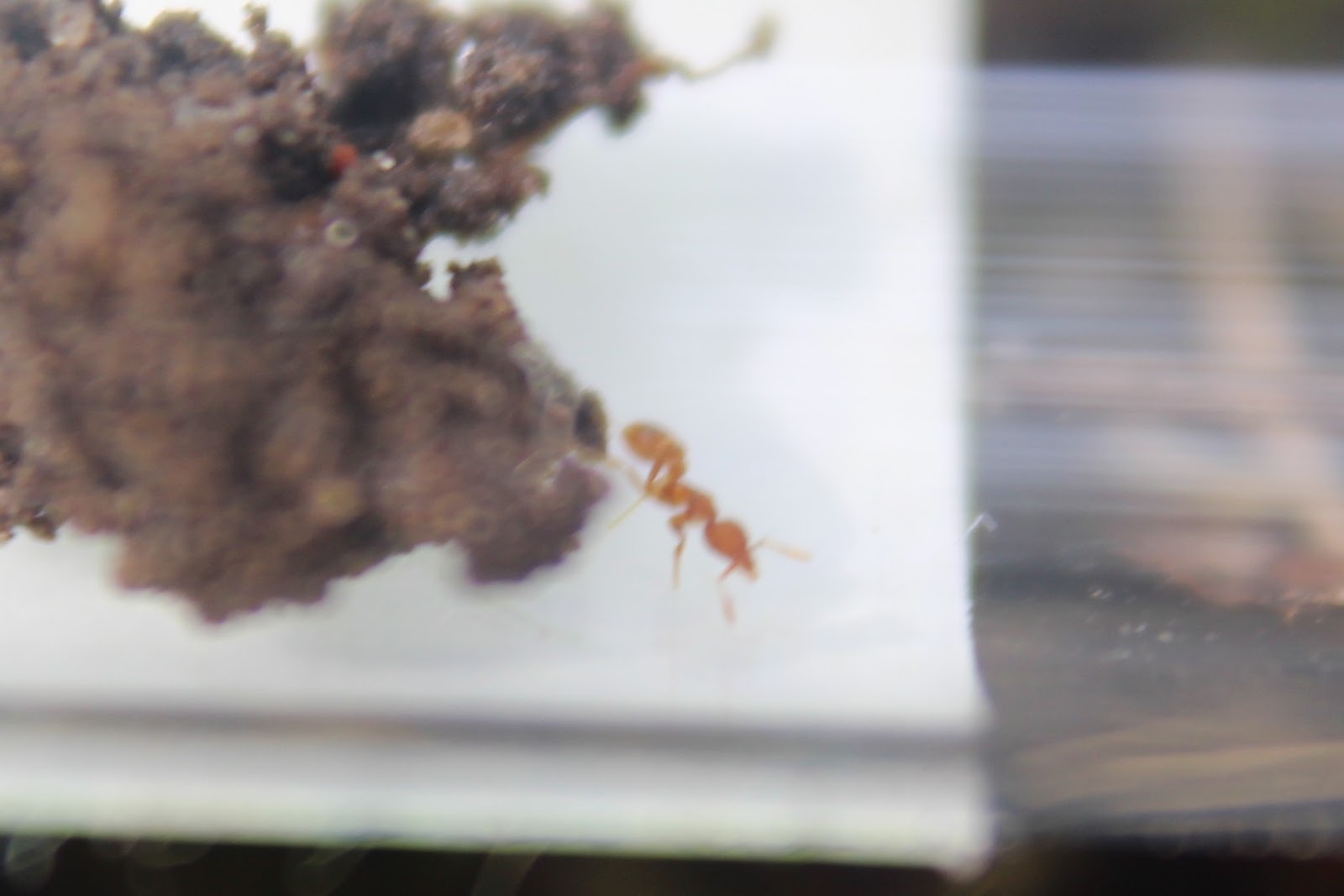
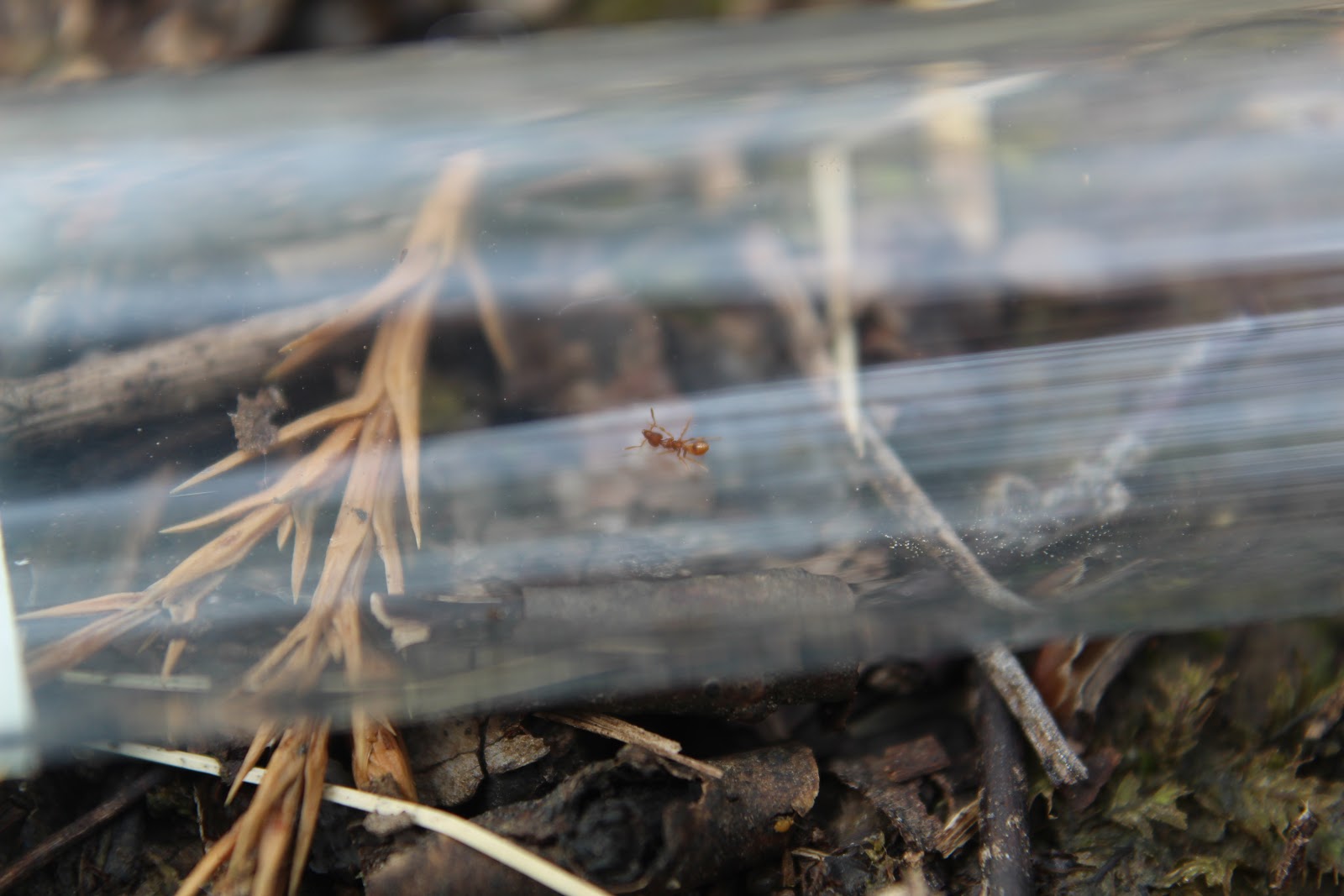
Strumigenys sp. - In late August, I went to the forest in the morning. It had rained the night before. After flipping tons of rocks in search of more Strumigenys, I found three Strumigenys workers under a leaf that was under a rock. They will eat springtails bigger than them, which is really cool to see.
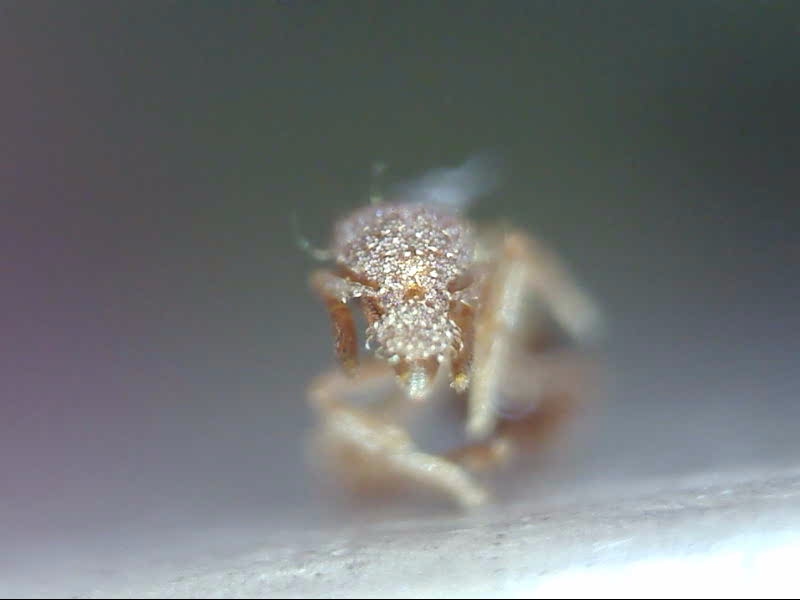
Tetramorium bicarinatum - I found a worker on June 16th 2018 on someones driveway. They’re documented to be indoor introduced into Wisconsin, which is why I found them close to a home. I’ll be keeping an eye out for them some more.
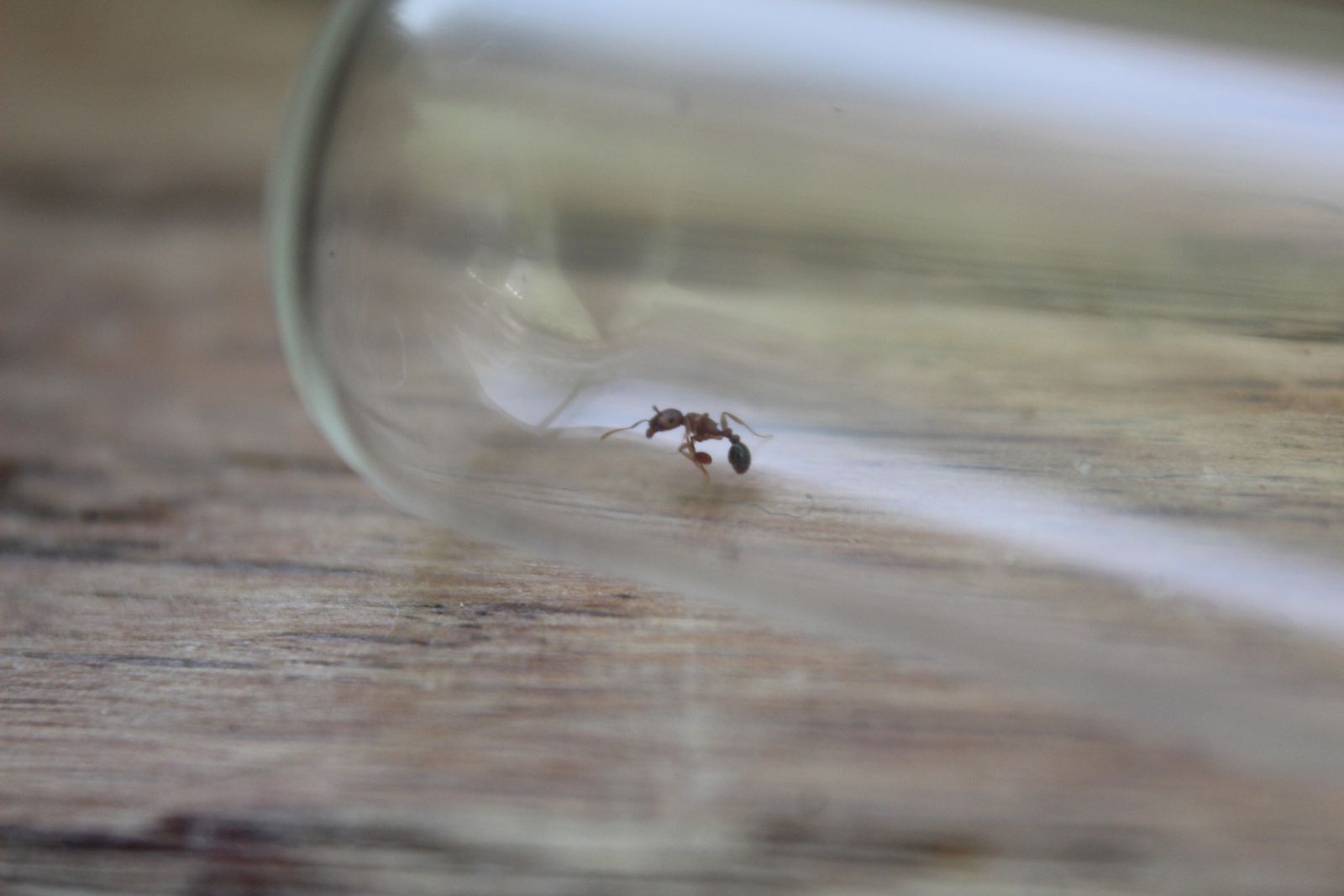
Tetramorium tsushimae - I've almost surely found this species, although it's difficult to tell them apart from T. immigrans for sure, I have identified a queen as being T. tsushimae, and I have found them in northern Illinois. When they were found in Illinois, a few of the keepers with me captured queens. Some of the queens were kept together and fought in almost all instances. It's possible we may not have caught their queens, or that the local populations might not be polygynous as described in Japan (though I believe some midwest keepers have multi-queen colonies). More documentation and research of this invasive species and it's habits here in America are definitely needed.
Solenopsis molesta - This species can be found almost anywhere. However, due to it’s small size, it’s not always encountered. They thrive off of other ants, stealing brood and food since they’re too small to be detected by some species. I find them in abandoned nests, taking the scraps of other colonies, including Formica spp. And Crematogaster sp. They typically have their flights in late July, August, and sometimes September. Large flights happened in the beginning of August in 2018, while they flew with Lasius in September in 2019. The flights from each colony can be just a dozen or two queens up to one hundred, but with so many colonies spread out and thriving, there’s queens everywhere when they fly on warm afternoons after rain.
Ponerine
Hypoponera opacior - I have found this species near my house, on the sidewalk, and underneath bricks. In April 2020, I found this species to be abundant in the forest.
Ponera pennsylvanica - I find these species with their whole colony under rocks on warm days. They’re notoriously hard to raise in a test tube setup. Queens are semi-claustral and fly at the end of the year. Single queens can be found under rocks in the spring, sometimes together. This species is highly polygynous and I often find them together in groups of 2-4. This species refuses to nest in certain soils. Identified in the field by their yellow pupae. I suspect Hypoponera opacior is in Wisconsin, which could be confused with Ponera pennsylvanica.
There seems to be some association with the myrmecophile Trimioplectus obsoletus in rock nesting colonies. I haven’t figured out what it does in these colonies, but I do have one in captivity at the time of writing. This beetle seems to be common in nests in the spring.
I found a colony of Ponera pennsylvanica by sorting through some rotting wood. What I found was pretty interesting, and makes me question a lot more of their biology. As queens eclose, I found a chamber with a queen that must’ve eclosed within the last 12 hours. The strange occurrence was that it had no wings, leading me to believe there’s some Ponera pennsylvanica that form supercolonies, breed in the nest, or use queen calling. Another keeper from Illinois has come to the same conclusion.
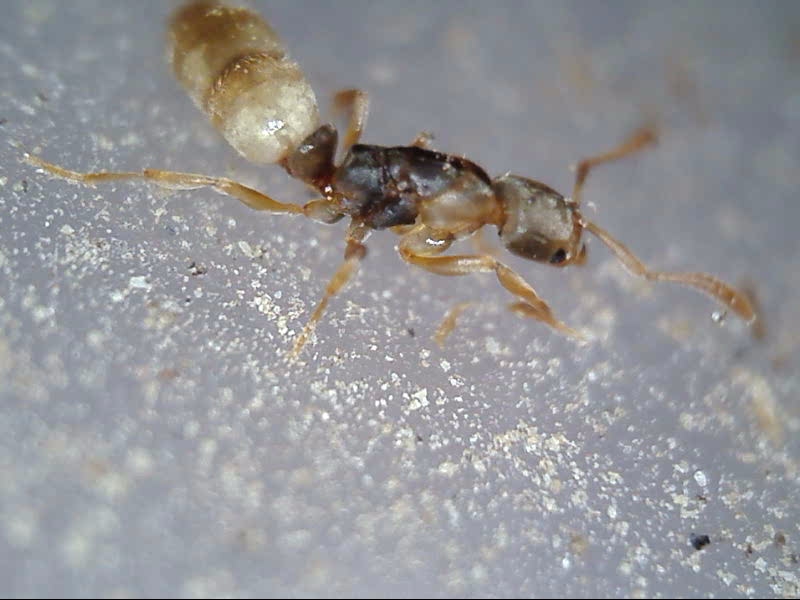
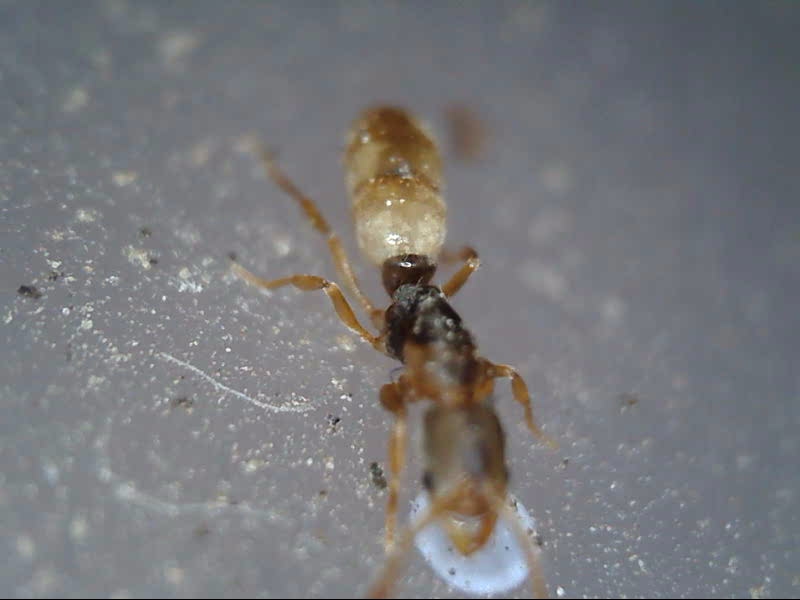
Amblyoponinae
Stigmatomma pallipes - I have found 2 workers of this species under a log in the beginning of May 2018, then on May 10th (a few days later) I found a queen under a rock. The workers are mostly subterranean, and can be confused with queens of Ponera pennsylvanica at times. The workers are actually quite common in oak-pine forests, being found under leaf litter. There seems to be a variant that is blood red in coloring, opposed to the slightly brighter variant, which is more common. The queens take flight in fall.
I witnessed a flight of this species in late August. Queens came out of the nest with no workers to be seen. Males then swarmed above and tried to mate with the queens by chasing them on the ground. Very few of these queens (about 15-25 queens in all) took flight.
Dolichoderinae
Dolichoderus taschenbergi - I was very surprised to find this species scurrying around the forest floor, just inches from a Formica aserva mound. I am only able to find these species in specific spots (and I’ve gone to a lot of spots), indicating that their distribution is highly spotty. The nest was at the base of a Pinus sp. tree, however they had moved away by July so I was unable to document their flights. This species is found at Chiwaukee.
Dolichoderus mariae - A keeper in Milwaukee has found these ants, and there were also pictures of them from Door County from Dr. James Trager. In June 2020, I, Antennal_Scrobe, and CheetoLord02 found a seemingly large colony of these ants in Chiwaukee Prairie State Natural Area in June 2020.
Tapinoma sessile - I find these ants in houses, in forests, under rocks, just about anywhere. The queens are almost as small as the workers, and will usually be at the surface with the workers on warm days. They form huge colonies with many queens in some areas, but I’ve only witnessed single queen colonies under rocks.
Dorymyrmex grandulus - There was a small population at Spring Green Nature Preserve, near the parking lot. I’ve collected two workers. These ants are common in small pockets at the Kenosha Sand Dunes, specifically on a sandy path from a parking lot.
Forelius pruinosus - One of the most common ants I found at Spring Green, and is probably distributed over more of the sandy areas in the state.
Wisconsin 2021 Bioblitz
In 2021, a few of us Wisconsinites are planning to travel to natural areas all over the state in an effort to better document the ant species here. Contact me if you live near or in Wisconsin and would like to help.
Trips & Natural Area Documentation
Spring Green Preserve State Natural Area
Spring Green is known as the “Wisconsin Desert”. It hosts many species there that aren’t as common in other places in Wisconsin because it’s much like a desert, containing cacti and sand-loving species.
August 11th, 2018
I traveled 2 hours to Spring Green Nature Preserve in western Wisconsin. It was about 85 degrees, and strangely enough most of the mounds were inactive. The most common ants were Lasius neoniger and Monomorium minimum, with Forelius sp. coming right after them. The most interesting find was a Dorymyrmex grandulus worker foraging on a leaf.
Spring Green on August 13th, 2019
The weather for the day was slightly windy and around 68 degrees Fahrenheit, with rain occurring just a few hours prior to arrival. I thought these conditions would be unsuitable for searching for ants, but I was wrong. Upon first arrival at the preserve, I noticed tiny hills. These turned out to be Pheidole pilifera, a new state record.
I have added any extra species I found to the list, and I have made an album of pictures to decrease the clutter of the thread. I suspect the Aphaenogaster sp. which is shown in the album could be a new state record.
https://www.formicul...ing-green-2019/
Spring Green on April 7th, 2020
CheetoLord02 and myself went to Spring green on April 7th, 2020. We went on this day because we knew ants would be active, since it was around 70 degrees. When we got there, we realized the field was so barren in its absence of grown grass that we could carefully walk between the cacti and see every single colony there was. This enabled us to go far into the field. We found a huge amount of new species. We found multiple large dulotic Formica mounds and all sorts of hosts. We were observing a multi-species mound of Formica when a Polyergus mexicanus worker came out of the entrance. Over the next few hours, we saw large Pheidole pilifera and Pheidole bicarinata colonies, as well as Monomorium minimum. We found polygynous Formica pallidefulva and huge amounts of Lasius, Forelius, and some Tapinoma. Near the beginning of the path by some trees, we noticed a huge Formica subsericea mound. We observed and photographed Camponotus americanus and Prenolepis imparis. The list has been updated.
https://www.formicul...een-april-2020/
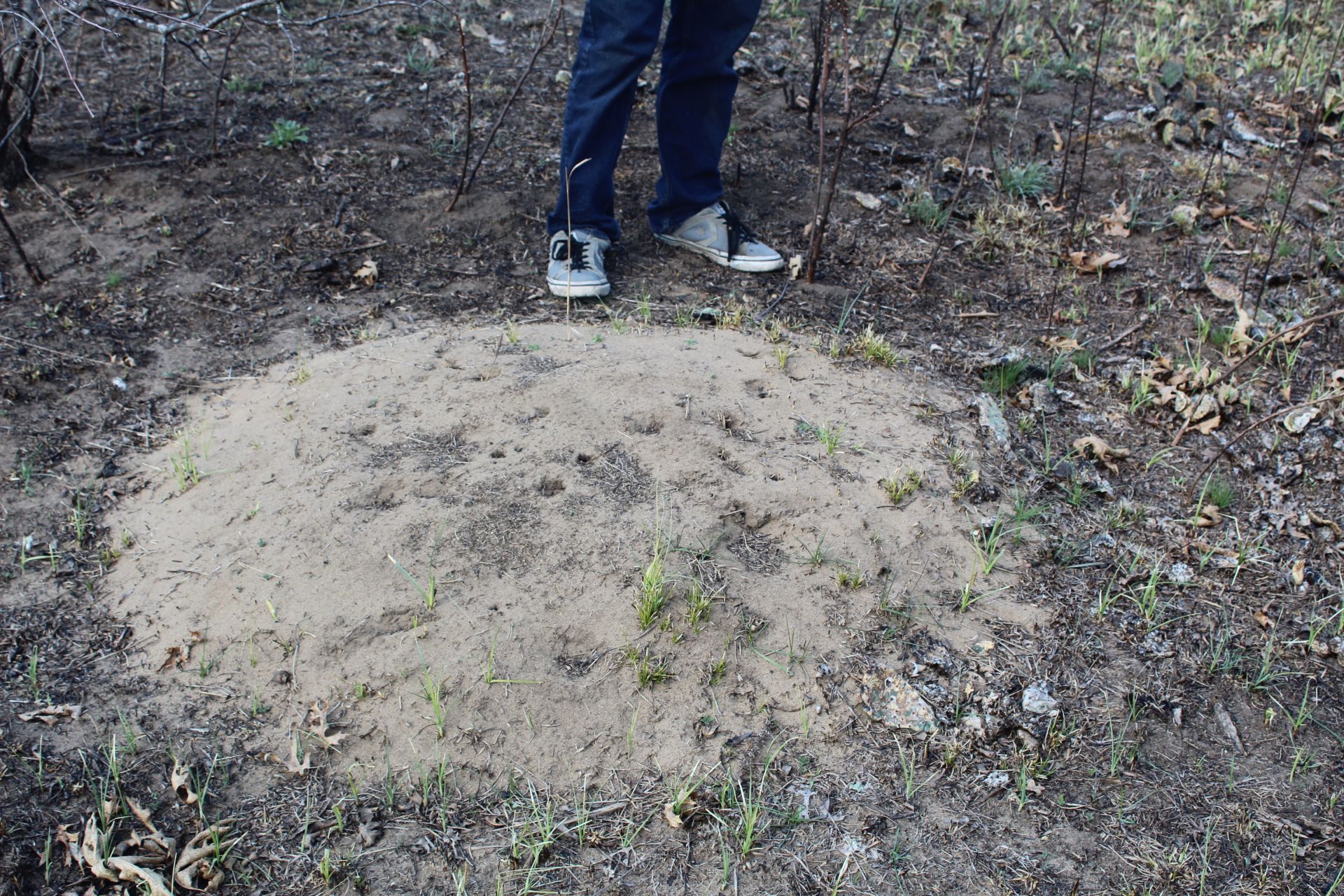
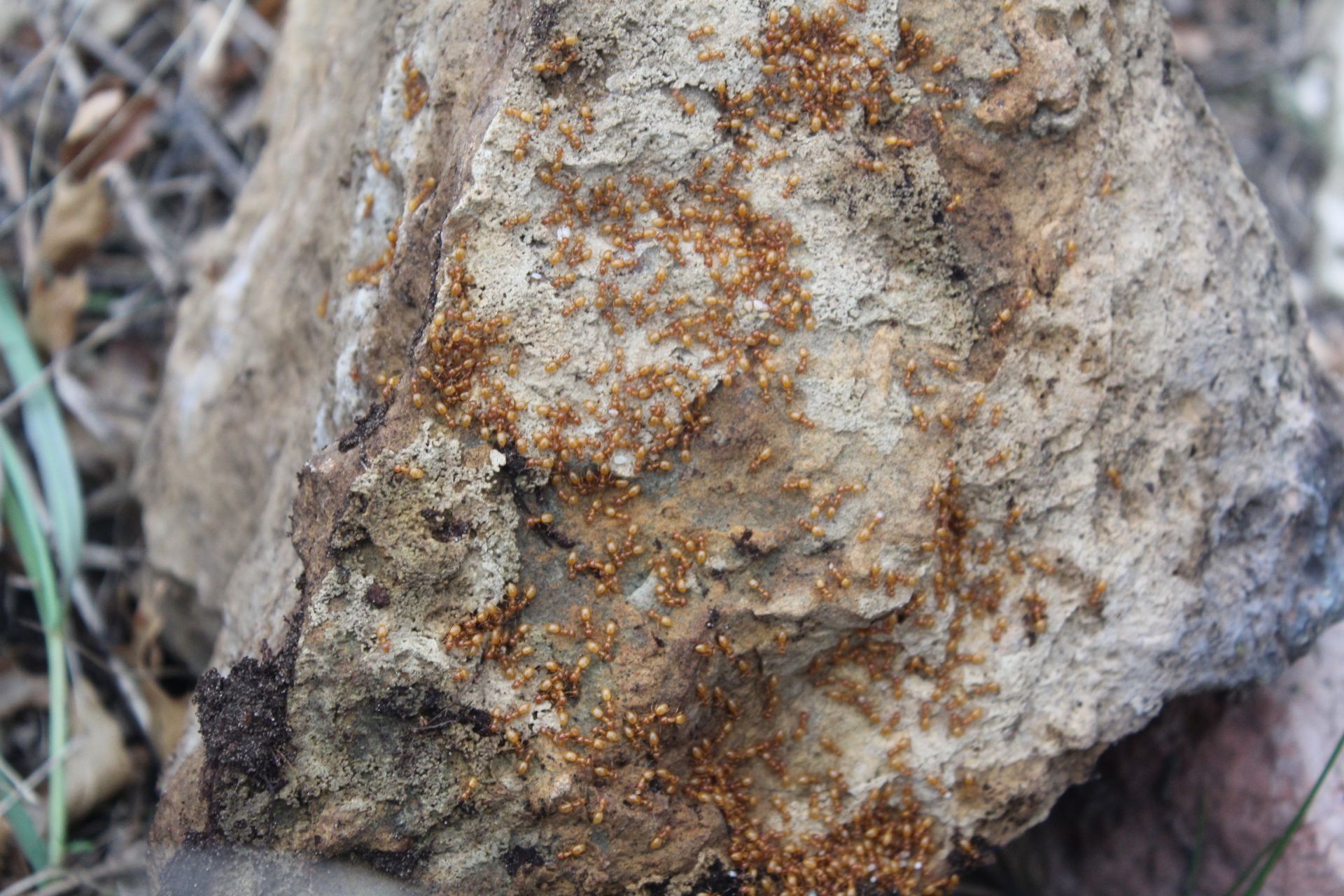
Below is the list of Spring Green ants found on my and others trips there.
Species list:
Formica biophilica
Formica subsericea
Formica dolosa
Formica argentea
Formica pallidefulva
Formica neogagates
Formica aserva
Formica hewitti
Formica prociliata
Formica obscuripes
Formica obscuriventris
Formica neoclara
Polyergus mexicanus
Prenolepis imparis
Dorymyrmex grandulus
Monomorium minimum
Forelius pruinosus
Crematogaster emeryana
Crematogaster cerasi
Myrmica punctiventris
Myrmica fracticornis
Myrmica spatulata
Myrmica punctiventris
Tapinoma sessile
Nylanderia parvula
Camponotus nearcticus
Camponotus americanus
Camponotus pennsylvanicus
Camponotus chromaiodes
Camponotus caryae
Camponotus subbarbatus
Lasius neoniger
Lasius crypticus
Lasius speculiventris
Lasius claviger
Lasius latipes
Pheidole bicarinata
Pheidole cf. pilifera
Aphaenogaster rudis
Aphaenogaster treatae
Aphaenogaster picea
Aphaenogaster tennesseensis
Ponera pennsylvanica
Hypoponera opacior
Stenamma impar
Stenamma sp.1
Myrmecina americana
Temnothorax texanus
Temnothorax curvispinosus
Solenopsis molesta
Nylanderia parvula
As of right now, species not yet recorded in Wisconsin on this list include: Pheidole cf. pilifera (?), Aphaenogaster treatae, Crematogaster emeryana, Temnothorax texanus, Polyergus mexicanus, Formica hewitti, Hypoponera opacior, Stenamma impar, Formica neoclara, Camponotus chromaiodes
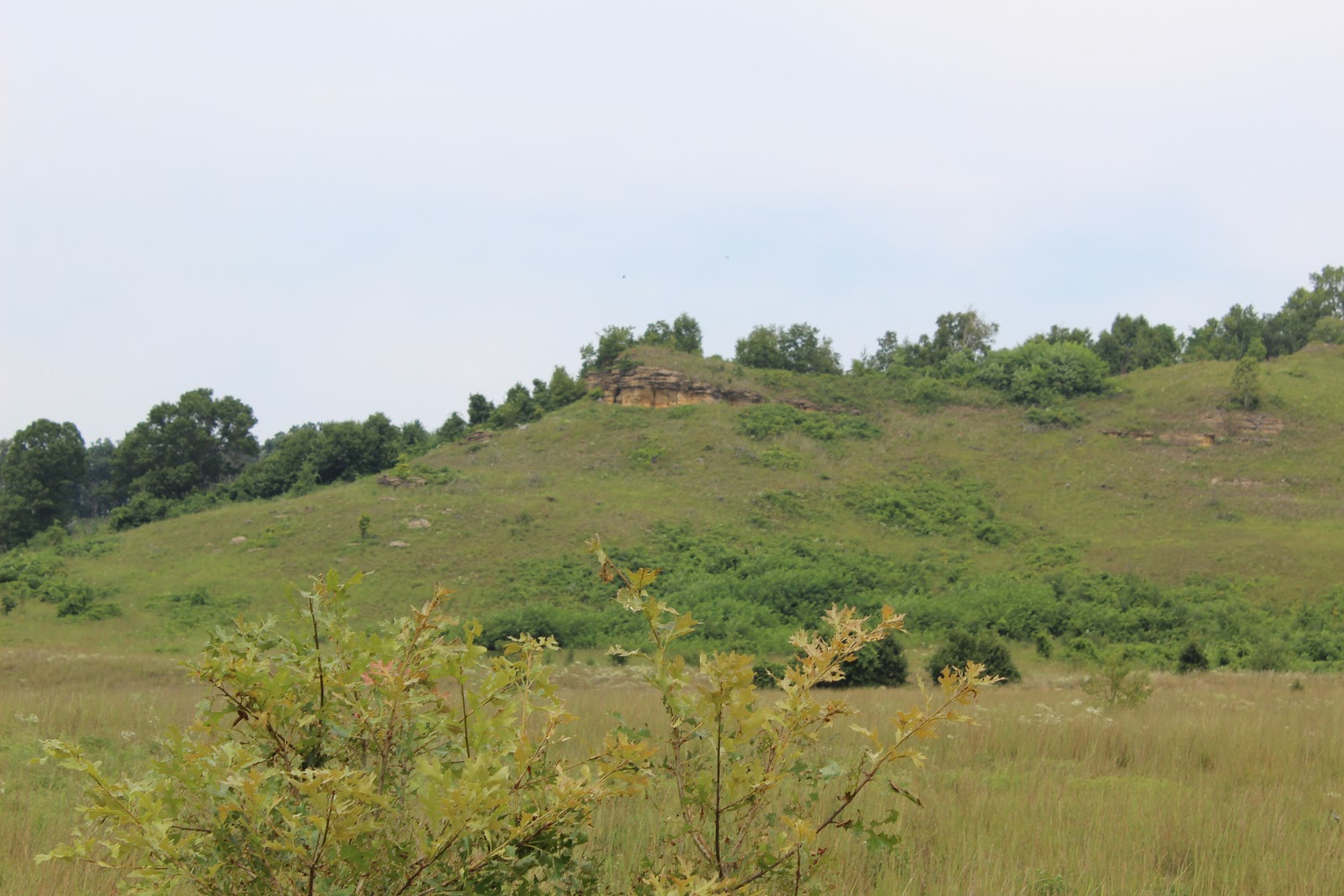
Pheasant Branch Conservancy - August 13, 2019.
I went to Pheasant Branch Conservancy, in Middleton. I found some of the common species there, but I was only at the conservancy for less than an hour. It is this conservancy where some Dolichoderus sp. have been reported.
I found:
Lasius americanus
Lasius neoniger
Camponotus pennsylvanicus
Formica subsericea
Formica sp.
Crematogaster sp.
Myrmica sp.
Stenamma sp.
The conservancy had a wide variety of plants, and I’m sure if it was warmer and I had gone further on the trails I would find some very interesting ants.
An album to decrease the clutter of this thread.
https://www.formicul...nservancy-2019/
Kenosha Sand Dunes
On September 29th, 2019, I went to the Kenosha Sand Dunes in Kenosha, WI. It is a sandy, beachside area with ants somewhat similar to Spring Green. Mdrogun was also there with me. It was a cold day, being in the lower 60s with light off/on rain.
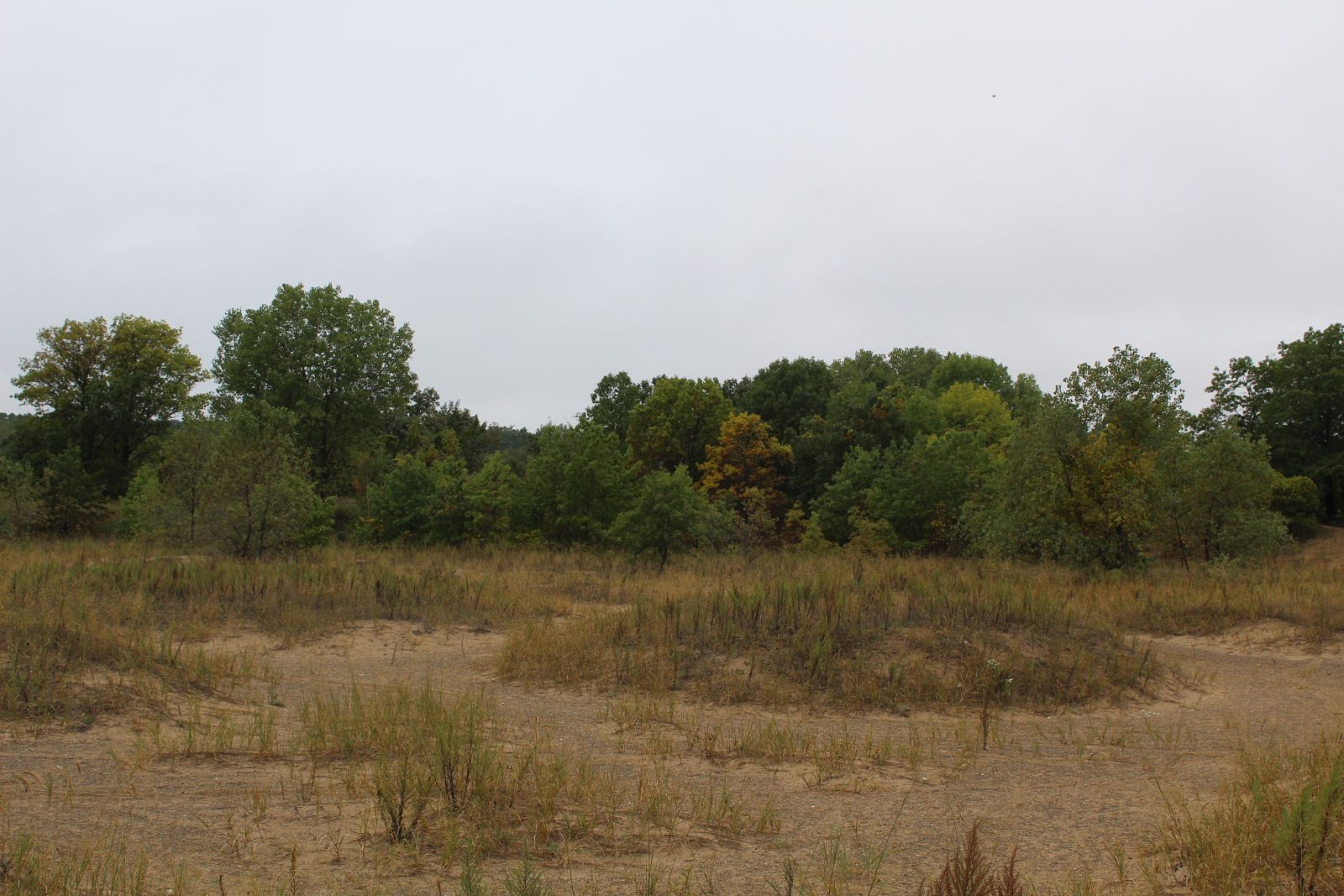
If I had gone on a better day for anting, we definitely would’ve found a lot.
Kenosha Sand Dunes on June 18th, 2020.
Antennal_Scrobe, CheetoLord02, and myself went on an anting trip to first Chiwaukee Prairie State Natural Area, and second to the Kenosha Sand Dunes. This trip helped uncover more species at this preserve, but most of the open-nesting species were not visible because of the long drought. We found a few colonies of Dorymyrmex grandulus bordering forested areas and open areas. Formica subsericea and Lasius neoniger were most common by the forest's edge, aside from the Dorymyrmex. Crematogaster were common under and in pieces of wood, but mostly confined to the forest areas.
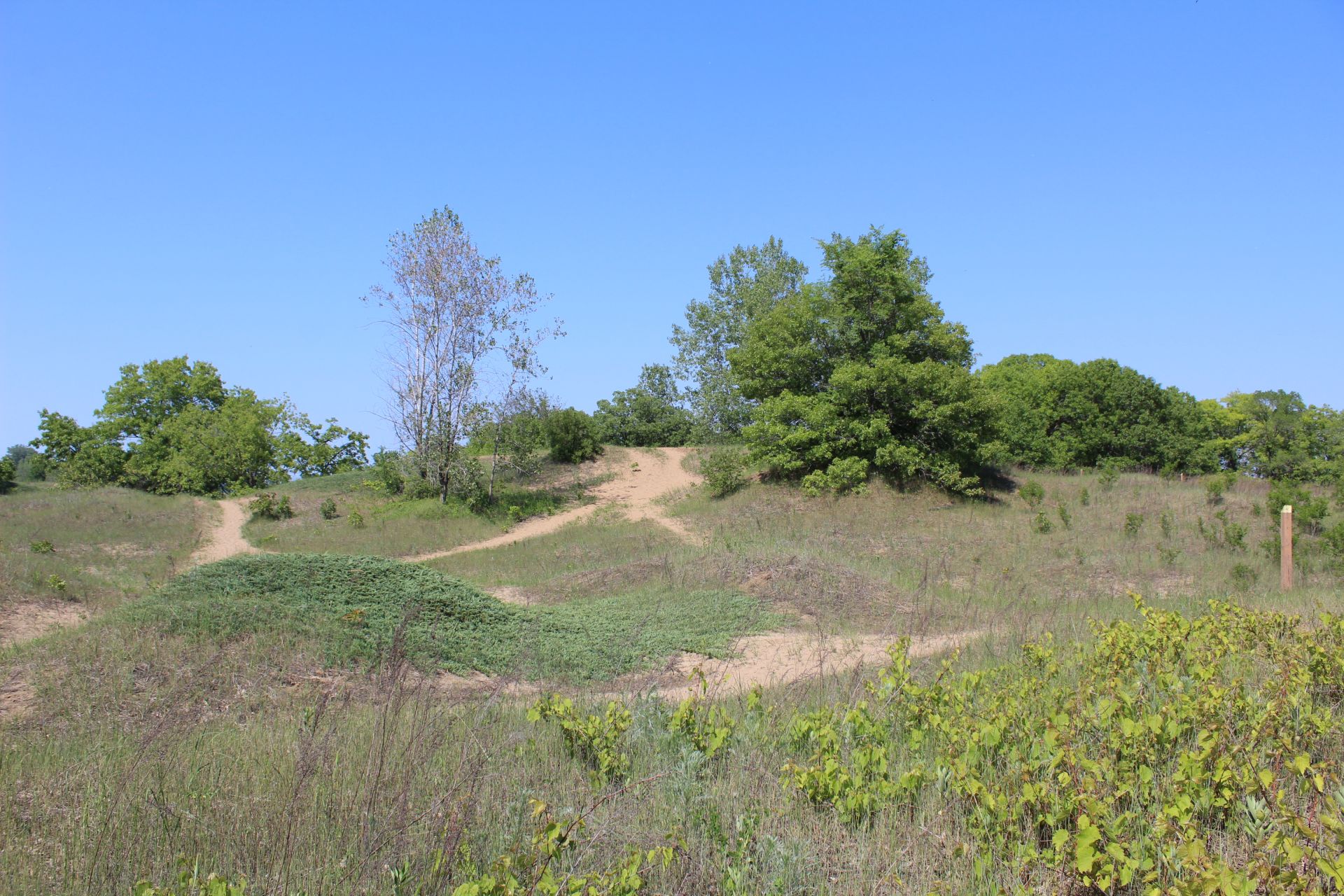
Below is the species list for Kenosha Sand Dunes.
Species List
Aphaenogaster rudis
Camponotus pennsylvanicus
Camponotus caryae
Crematogaster cerasi
Myrmica fracticornis
Myrmica spatulata
Dorymyrmex grandulus
Lasius neoniger
Lasius americanus
Lasius pallitarsis
Nylanderia parvula
Formica subsericea
Formica pallidefulva
Formica neogagates
Prenolepis imparis
Tapinoma sessile
Tetramorium immigrans
Picture album: http://www.formiculture.com/gallery/album/1694-kenosha-picture-album-2019/
Of this list, Dorymyrmex grandulus is not reported in the state.
Chiwaukee Prairie State Natural Area
Chiwaukee Prairie State Natural Area - June 18th, 2020
Antennal_Scrobe, CheetoLord02, and myself went on an anting trip to first Chiwaukee Prairie State Natural Area, and this was the first time. We found many species including Dolichoderus mariae, Dolichoderus taschenbergi, and Formica obscuripes. It is a prairie with amazing plant diversity, and a good amount of Formica mounds are spread around. The ticks are really bad when you go through the grass.
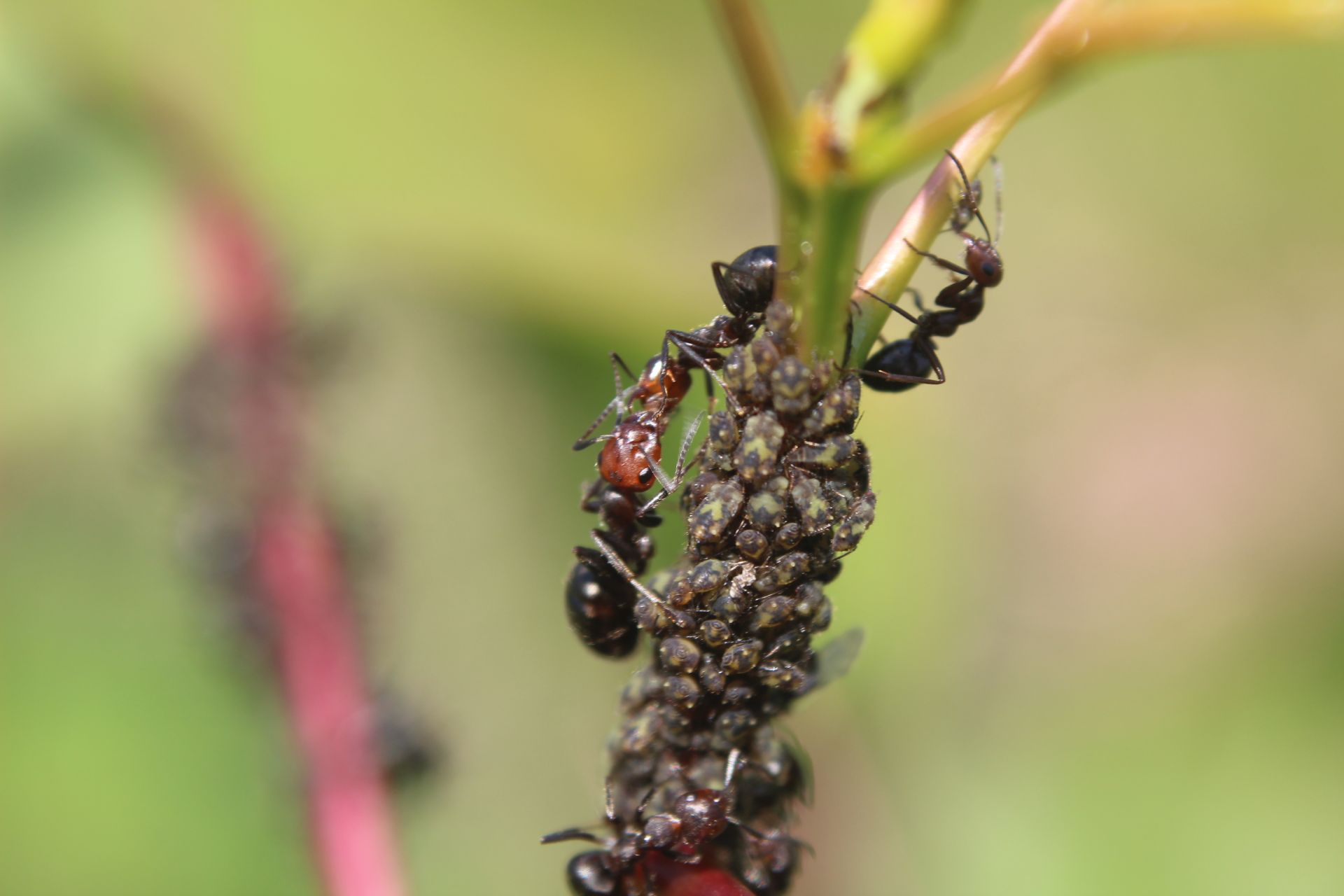
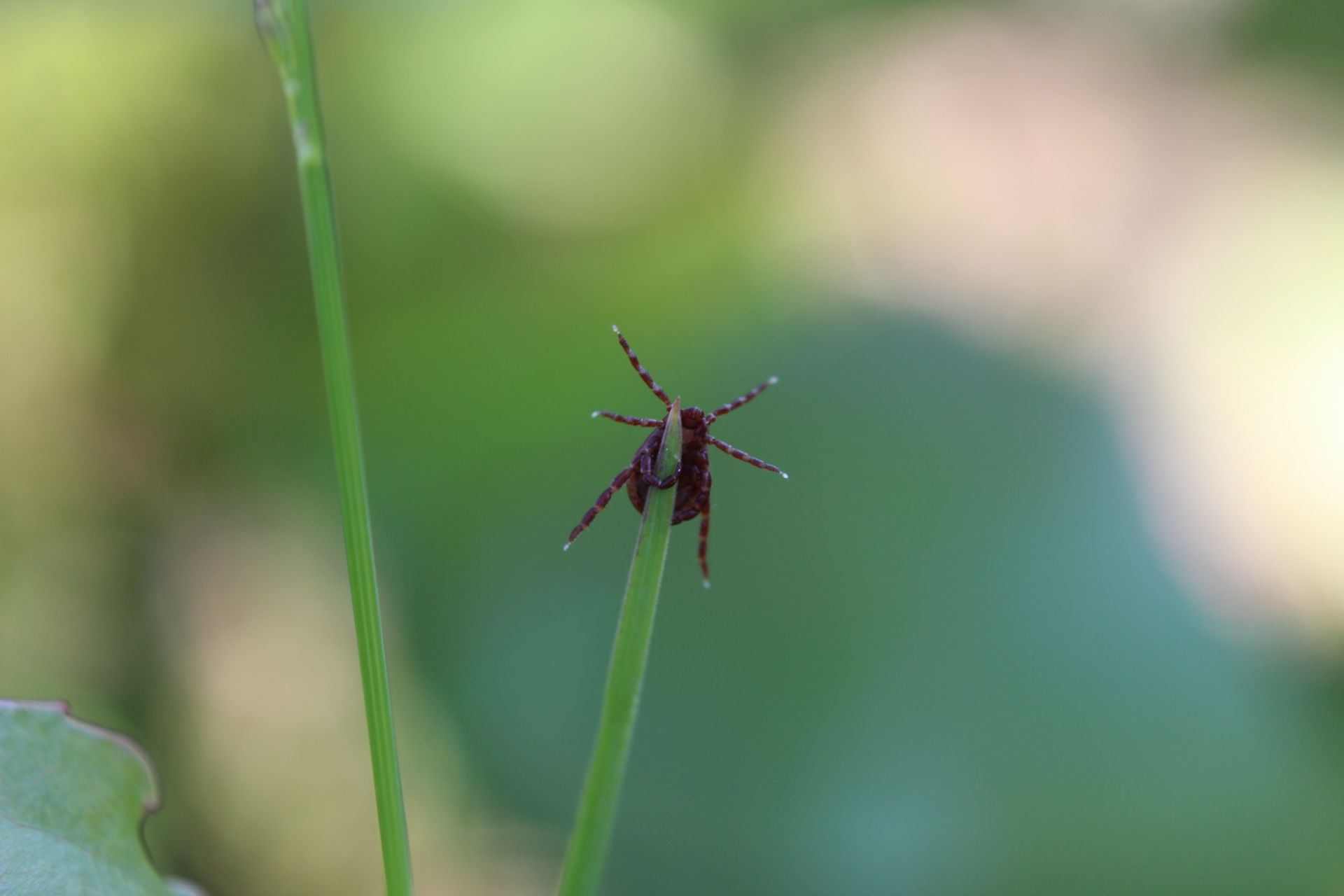
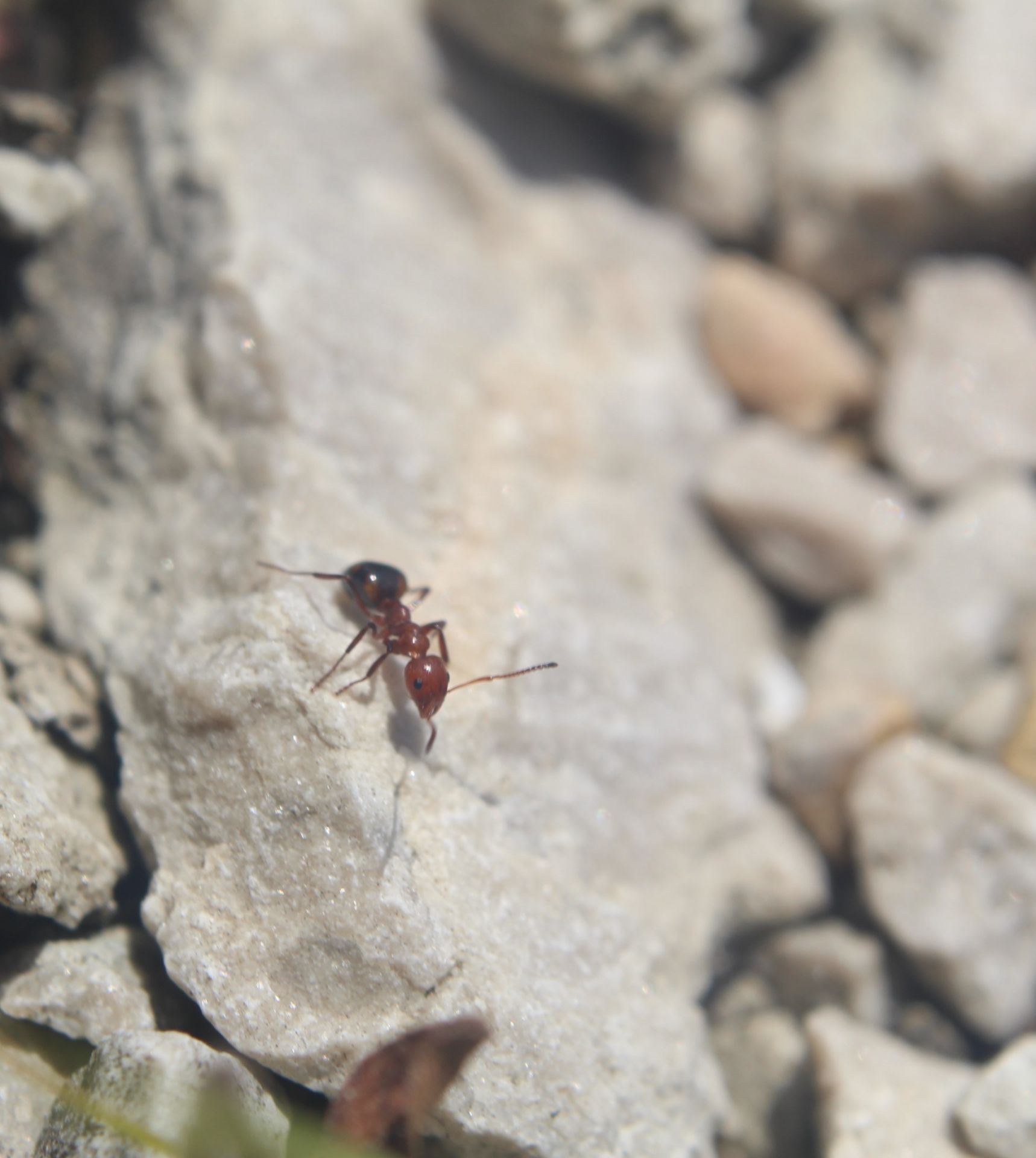
Species list:
Formica subsericea
Formica aserva
Formica neogagates
Formica obscuripes
Formica pallidefulva
Dolichoderus taschenbergi
Dolichoderus mariae
Lasius neoniger
Lasius americanus
Lasius claviger
Temnothorax ambiguus
Temnothorax pilagens
Crematogaster cerasi
Nylanderia parvula
Brachymyrmex depilis
Tapinoma sessile
Myrmica spatulata
Tetramorium immigrans
Of this list, Temnothorax pilagens and Dolichoderus mariae are not previously reported in the state.
Gotham Jack Pine Barrens State Natural Area - April 22nd, 2020
CheetoLord02 and myself went to this park in the early afternoon. It was the upper 60s and going to be a bit warmer, and Prenolepis would have flights but eventually get rained out. We started off at a small parking lot that is not marked as a parking lot on Timber Lane (not even sure if we were supposed to park there), and made our way toward the river. On our way there, we saw mostly Formica, Camponotus, Lasius, etc. This preserve had a lot of Formica dolosa and Lasius neoniger. The river was probably the best, which is where the Pheidole, Forelius, Nylanderia, and Monomorium all were. Nylanderia arenivaga was found by the beach and is a new record for Wisconsin. The preserve is not marked with signs or directions, so keep phone battery and use good tracking skills. We went on the regular trail from the entrance, and came to a large line-like clearing for electricity poles to go through. From here, we walked west until we saw another path taking us south to the river. You will walk past a property who might have a nice dog named Willie, who looks intimidating but just sniffs your shoes. If you continue, you will be seeing rows of pine trees and when you go past that you'll be at the rivers edge. Your shoes will get filled with sand.
https://www.youtube....h?v=pu3M5rQWIhg
Here's the photo album for this trip
Gotham Jack Pine Barrens State Natural Area - May 2nd, 2020
This is one of the most interesting anting trips we've done here. We flipped logs and rocks at the starting stretch of the path, and found large polygynous Crematogaster lineolata. We combined workers from further down the path and they got along. There appears to be a large colony or colonies being polydymous and polygynous at this preserve, which is fascinating. We also found a worker of an interesting small, Temnothorax ambiguus worker.
Thanks to Antennal_Scrobe for suggesting this area.
Species list:
Aphaenogaster rudis
Aphaenogaster picea
Aphaenogaster tennesseensis
Lasius subglaber
Lasius neoniger
Lasius claviger
Lasius aphidicola
Lasius americanus
Tapinoma sessile
Temnothorax ambiguus
Camponotus pennsylvanicus
Camponotus novaeboracensis
Camponotus subbarbatus
Camponotus americanus
Crematogaster cerasi
Crematogaster lineolata
Pheidole bicarinata
Monomorium minimum
Forelius pruinosus
Formica subsericea
Formica dolosa
Formica pallidefulva
Nylanderia parvula
Nylanderia arenivaga
Ponera pennsylvanica
Myrmica sp.
Of this list, Nylanderia arenivaga is a not yet reported in Wisconsin.
Castle Rock Lake - June 25 - July 1
FC user CheetoLord02 recently visited Adams Wisconsin; This is his documentation of the ants of the area: "I recently visited Adams Wisconsin, from June 25 to July 1. Adams, WI is a small town in central Wisconsin near Castle Rock Lake. Much of the land around the lake is largely untouched, however some of it is only easily accessible by boat. The soil there is mostly fine sand, which is absolutely perfect for ants. There is one island in the lake that is a very popular spot for boaters to gather. It is only accessible by boat, great for cliff jumping, and full of ants. The island had (at least) 2 undocumented species for WI, Temnothorax americanus and Temnothorax schaumii. This island is also the only place I've seen Pheidole in the county, although there are probably other places in the county with them that I wasn't able to search. It's a very large area to go through. On one beach I found Crematogaster, polygynous Myrmica, and two species of Dolichoderus, including a colony of D. plagiatus with alate brood."
Species list:
Aphaenogaster rudis
Aphaenogaster picea
Aphaenogaster tennesseensis
Crematogaster cerasi
Camponotus pennsylvanicus
Camponotus novaeboracensis
Camponotus herculeanus
Camponotus caryae
Camponotus nearcticus
Dolichoderus plagiatus
Dolichoderus pustulatus
Formica subsericea
Formica pallidefulva
Formica dolosa
Formica neogagates
Pheidole bicarinata
Solenopsis molesta
Myrmica punctiventris
Myrmica sp.
Lasius neoniger
Lasius americanus
Lasius aphidicola
Stenamma sp.
Tapinoma sessile
Nylanderia parvula
Prenolepis imparis
Temnothorax americanus
Temnothorax curvispinosus
Temnothorax ambiguus
Temnothorax schaumii
Ponera pennsylvanica
Of this list, Temnothorax americanus and Temnothorax schaumii are not documented in Wisconsin.
Woodman Lake Sand Prairie And Dead Lake on September 6th, 2020
I went to Woodman Lake Sand Prairie And Dead Lake in Woodman, WI on September 6th, 2020. I went this day expecting no flights, because the forecast said the entire day would be very windy and popup showers were possible. When I arrived shortly after 1PM, the first ant I saw was Pheidole pilifera. I soon got to witness flights of Myrmica spatulata complex and other Myrmica species when the wind unexpectedly stopped. Later on in the day, Myrmica spatulata flights picked up and Lasius flights began. I found a few Lasius latipes queens. The top most common ants were some of the coolest, being, in no particular order, Lasius neoniger, Pheidole pilifera, Myrmica spatulata, and Aphaenogaster treatae. This is the biggest population in Wisconsin I’ve seen of all these ants except L. neoniger. There were no Pheidole bicarinata at this area, but there were small populations of Forelius pruinosus.
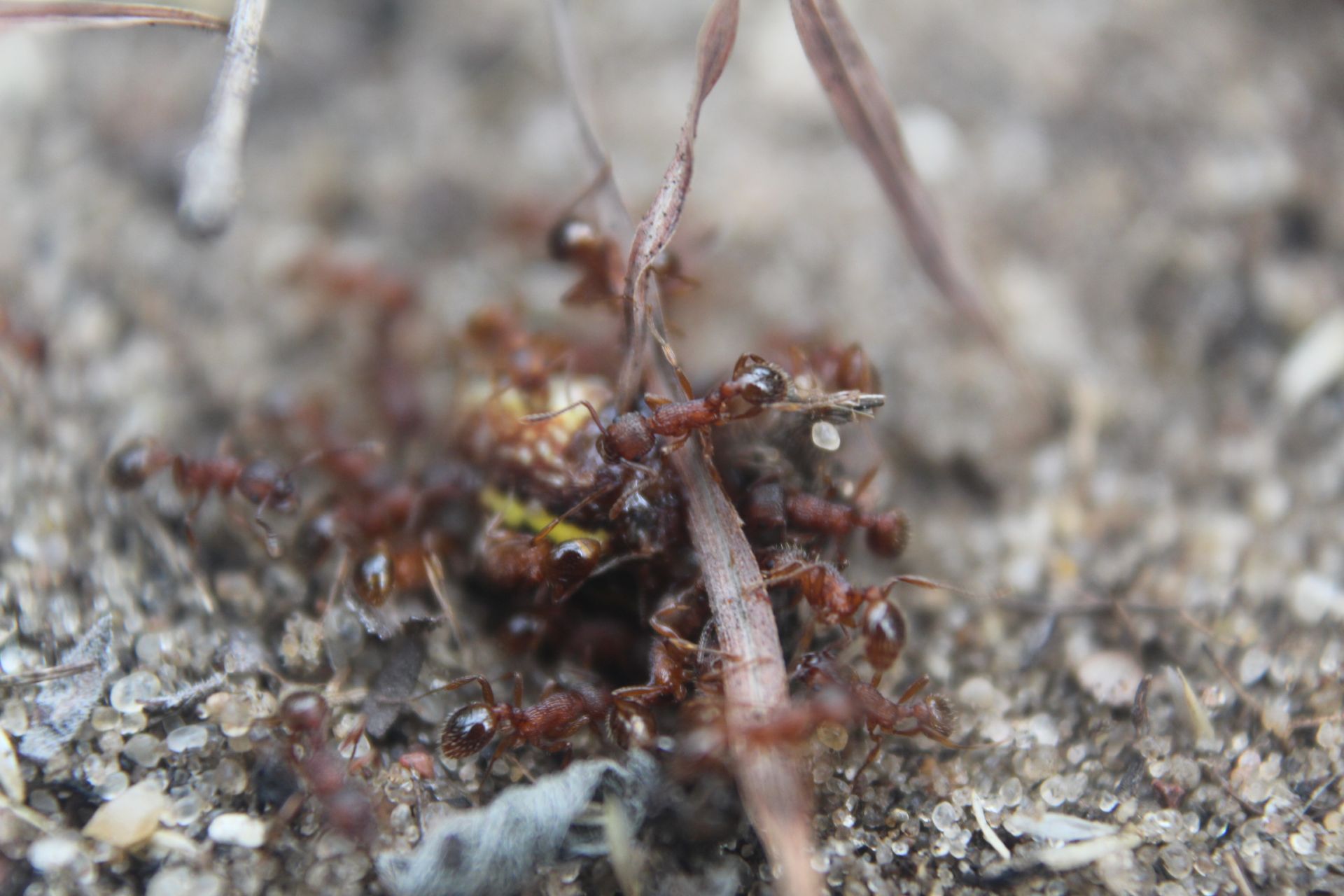
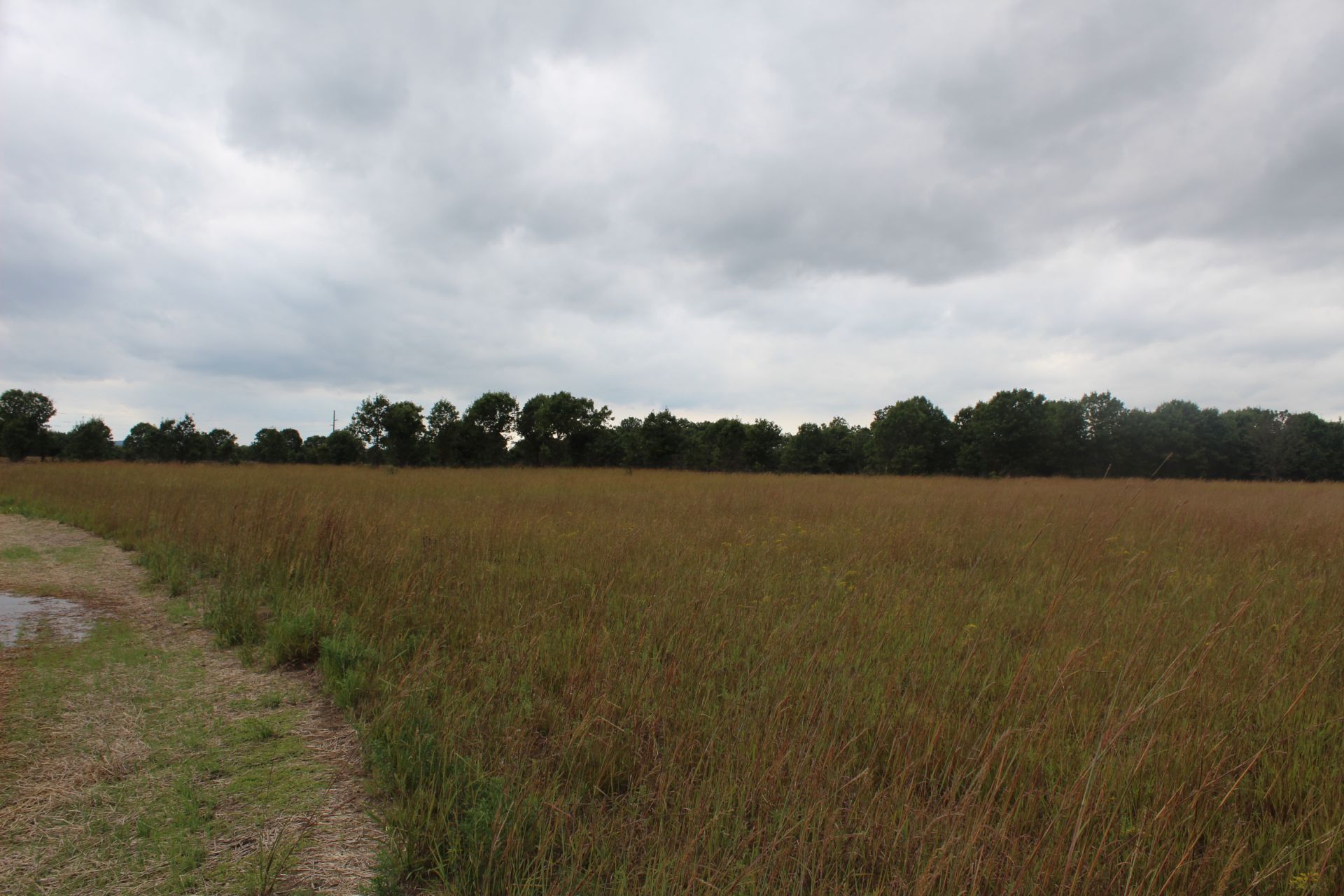
Species list
Lasius neoniger
Lasius brevicornis
Lasius latipes
Brachymyrmex depilis
Camponotus americanus
Camponotus pennsylvanicus
Crematogaster cerasi
Formica biophilica
Formica dolosa
Formica subsericea
Formica vinculans
Temnothorax curvispinosus
Monomorium minimum
Myrmica spatulata complex
6+ Myrmica sp.
Pheidole pilifera
Aphaenogaster treatae
Forelius pruinosus
Nylanderia parvula
Nylanderia sp.
Prenolepis imparis
Ponera pennsylvanica
Edited by AnthonyP163, February 7 2021 - 7:46 AM.
















